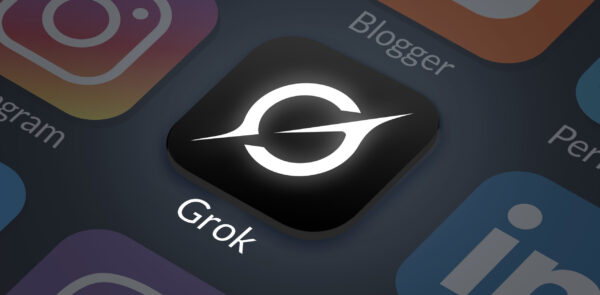
Table of Contents
In today’s competitive business landscape, increasing customer lifetime value (LTV) stands as a pivotal strategy for maximizing profits and ensuring long-term sustainability. We recognize that acquiring new customers can cost five times more than retaining existing ones, making LTV optimization not just beneficial but essential for growth. LTV represents the total revenue a customer generates over their relationship with your brand, factoring in purchases, loyalty, and referrals. By focusing on enhancing this metric, you shift from short-term sales to building enduring relationships that drive recurring revenue. This guide explores proven methods to boost LTV, incorporating insights on personalization, retention, and AI-driven tactics. We’ll delve deep into each area, providing actionable advice, statistics, and how tools like Generative AI, Google Search AI, ChatGPT, and Grok can amplify your efforts. This year, with businesses reporting up to 25% profit increases from LTV-focused strategies, embracing these approaches can transform your bottom line and foster customer loyalty.
Consider a repeat customer who starts with a single purchase but, through targeted engagement, becomes a brand advocate—multiplying their value exponentially. We encourage you to assess your current LTV as we discuss these methods, identifying opportunities to apply them in your operations. Whether you’re in e-commerce, services, or SaaS, incorporating semantic keywords like “strategies for boosting customer LTV” ensures your efforts align with search intent while promoting inclusivity. Increasing LTV isn’t about quick wins; it’s about creating value that keeps customers returning, turning one-time buyers into lifelong partners. Let’s start by understanding the core components of LTV and why it matters for profit maximization, setting the foundation for practical implementation.
Understanding Customer Lifetime Value and Its Impact on Profits
Understanding customer lifetime value (LTV) forms the bedrock of any strategy aimed at maximizing profits, as it quantifies the long-term worth of your customer relationships. We define LTV as the predicted net profit attributed to the entire future relationship with a customer, calculated using metrics like average purchase value, frequency, and retention rate. For businesses, this means shifting focus from acquisition costs to nurturing existing customers, where a 5% increase in retention can boost profits by 25-95%. In practical terms, LTV helps allocate resources efficiently—investing in high-LTV segments yields higher returns than chasing low-value leads. This year, companies leveraging LTV insights report 30% higher revenue growth, highlighting its role in strategic decision-making.
To grasp its impact, consider how LTV influences budgeting; knowing a customer’s value over three years allows for justified spending on loyalty programs or personalized marketing. We recommend starting with a simple formula: LTV = (Average Purchase Value x Purchase Frequency x Customer Lifespan) – Acquisition Cost. Refine this with data from your CRM, factoring in variables like churn rate. Semantic keywords like “calculating customer LTV for business growth” can guide content creation to attract audiences seeking these insights.
Profits soar when LTV increases, as retained customers spend 67% more over time and refer others, amplifying organic growth. Challenges include accurate prediction, but AI tools mitigate this; Google Search AI analyzes industry benchmarks to adjust your calculations, while ChatGPT breaks down complex formulas into actionable steps.
Grok processes your data to forecast LTV variations based on scenarios like economic shifts, providing predictive insights. Generative AI simulates customer journeys, estimating LTV under different retention strategies. By understanding these dynamics, you prioritize initiatives that extend customer lifespan, directly enhancing profitability.
Regularly review LTV metrics quarterly to track improvements, adjusting for factors like seasonal buying patterns. This holistic view transforms LTV from a static number to a dynamic tool for profit maximization.
| Metric | Value | Business Implication |
|---|---|---|
| Retention Increase | 5% | 25-95% profit boost |
| Revenue Growth | 30% | From LTV insights |
| Spending Over Time | 67% more | Retained customers |
| Acquisition Cost Ratio | 1:5 retention | Cost efficiency |
- LTV Calculation Steps: Use average value, frequency, lifespan.
- AI Forecasting: Leverage Grok for scenario analysis.
- Review Frequency: Conduct quarterly metric checks.
This foundational knowledge empowers profit-focused strategies. As the Linchpin team, we specialize in digital marketing and strategy, helping businesses understand and apply LTV concepts with AI tools to maximize profits.
Implementing Personalization to Boost Customer LTV
Implementing personalization is a powerful way to boost customer LTV by making interactions feel tailored and valuable, encouraging repeat business and higher spend. We highlight that consumers expect brands to know their preferences, with 80% more likely to buy when experiences are personalized. For your business, this means using data to customize emails, recommendations, and offers based on past behavior, like suggesting complementary products to previous purchasers.
Start with segmenting your audience into groups based on demographics, purchase history, and engagement levels, then deliver targeted content. We recommend dynamic website elements that change based on user profiles, such as greeting returning visitors with “Welcome back” and personalized product grids. This year, personalized campaigns see 20% higher sales, proving their effectiveness in extending customer relationships.
AI supercharges personalization; Generative AI creates custom email templates that adapt to individual data, while ChatGPT refines messaging for tone and relevance. Google Search AI predicts trends in consumer preferences, allowing proactive adjustments like seasonal offers.
Grok analyzes interaction data to identify patterns, suggesting segments for upsell opportunities. Statistics show personalized experiences increase LTV by 10-30%, as customers feel valued and return more often.
Overcome challenges like data privacy by using first-party data and obtaining consent, building trust that further enhances LTV. We advise testing personalization levels with A/B variants to find the sweet spot without overwhelming users.
Integrate across channels for omnichannel consistency, ensuring a seamless experience from app to email. This comprehensive approach not only boosts immediate sales but cultivates loyalty for sustained profit growth.
| Strategy | Impact | Implementation Tip |
|---|---|---|
| Targeted Offers | 20% higher sales | Use behavior data |
| Custom Emails | 80% buy likelihood | AI template generation |
| LTV Increase | 10-30% | Segment audiences |
| Omnichannel | Seamless experience | Cross-channel integration |
- Audience Segmentation: Group by history and engagement.
- AI Customization: Use Generative AI for content.
- Testing Variants: A/B for optimal levels.
Personalization directly elevates LTV and profits. As the Linchpin team, we provide digital marketing and strategy, implementing AI-driven personalization to help you increase customer value and maximize returns.
Enhancing Retention Through Loyalty Programs and Engagement
Enhancing retention through loyalty programs and engagement is key to increasing LTV, as loyal customers spend more and advocate for your brand. We note that effective programs reward repeat purchases with points, discounts, or exclusive access, encouraging ongoing interactions. For example, tiered systems where customers unlock benefits like free shipping after certain spends can raise average order value by 20%. This approach fosters emotional connections, turning transactions into relationships that boost profits.
Engagement goes hand-in-hand, using email, social media, and apps to keep customers involved with valuable content like tips or updates. We suggest personalized rewards based on preferences, such as birthday offers, which see 3x higher redemption rates. This year, loyalty programs contribute to 60% of sales for many brands, underscoring their profit impact.
AI optimizes these efforts; ChatGPT crafts engagement emails that resonate, while Generative AI designs program structures tailored to your data. Google Search AI identifies trending loyalty features, like gamification, to keep programs fresh.
Grok analyzes participation data to refine rewards, predicting churn and intervening with targeted re-engagement. Statistics show engaged customers have 5x higher LTV, as retention reduces acquisition needs.
Overcome apathy by segmenting programs, offering varied rewards for different customer types. We advise tracking metrics like repeat purchase rate, aiming for 30%+ to ensure effectiveness.
Integrate feedback loops to evolve programs, using AI for sentiment analysis from reviews. This continuous engagement strengthens retention, directly maximizing LTV and profits.
| Feature | Effect | Metric |
|---|---|---|
| Tiered Rewards | 20% order value | Higher spend |
| Personalized Offers | 3x redemption | Better response |
| Program Sales | 60% | Revenue contribution |
| Engaged LTV | 5x higher | Profit growth |
- Program Design: Use tiers for progression.
- AI Engagement: Craft with ChatGPT.
- Churn Prediction: Analyze with Grok.
Strong retention programs elevate LTV significantly. As the Linchpin team, we specialize in digital marketing and strategy, developing AI-enhanced loyalty initiatives to help you retain customers and maximize profits.
Utilizing Data and AI for LTV Optimization
Utilizing data and AI for LTV optimization allows you to uncover insights that inform targeted strategies, turning information into profit-driving actions. We stress collecting data from interactions, purchases, and feedback to build comprehensive customer profiles. This enables predictive modeling, forecasting LTV based on behaviors like purchase frequency, with AI identifying high-potential segments for focused efforts.
AI tools are indispensable; Grok processes vast datasets to detect patterns, such as correlating email opens with repeat buys. Generative AI simulates scenarios, testing how changes like pricing affect LTV. ChatGPT interprets data into strategic recommendations, like upselling tactics for low-LTV customers.
Google Search AI researches benchmarks, ensuring your LTV calculations align with industry standards. This year, AI-optimized strategies see 15% LTV uplifts, as machine learning refines segmentation and personalization.
Data privacy is critical; use compliant tools to maintain trust while leveraging insights. We suggest dashboards for real-time monitoring, alerting to drops in engagement that signal churn risks.
Over time, AI evolves your approach, automating A/B tests for continuous improvement. This data-AI synergy not only boosts LTV but provides a competitive edge in profit maximization.
| Tool | Function | Uplift |
|---|---|---|
| Grok | Pattern detection | Insight generation |
| Generative AI | Scenario simulation | 15% LTV |
| ChatGPT | Recommendations | Strategic actions |
| Google Search AI | Benchmarking | Industry alignment |
- Data Collection: Gather from multiple sources.
- Predictive Modeling: Forecast with AI.
- Privacy Compliance: Use ethical practices.
Data and AI optimize LTV effectively. As the Linchpin team, we provide digital marketing and strategy, utilizing AI tools to analyze data and optimize LTV for your profit maximization.
Measuring and Iterating LTV Strategies for Continuous Improvement
Measuring and iterating LTV strategies ensures continuous improvement, allowing you to refine tactics based on real performance for maximum profits. We begin with establishing baselines using historical data, calculating current LTV to set improvement targets like 20% growth over six months. Track metrics such as retention rate, average order value, and churn, using dashboards for visualization.
Iteration involves analyzing what works—perhaps loyalty emails boost frequency—and scaling it, while tweaking underperformers. This year, businesses iterating on LTV see 25% higher profits, as data informs decisions.
AI facilitates this; Grok identifies anomalies in data, signaling areas for adjustment. Generative AI generates iteration hypotheses, like new segment strategies. ChatGPT summarizes reports, highlighting key insights for quick action.
Google Search AI benchmarks your metrics against peers, ensuring competitive positioning. Conduct A/B tests on initiatives, measuring LTV impact to validate changes.
Gather feedback through surveys to understand subjective factors affecting LTV, like satisfaction levels. We advise quarterly reviews, adjusting for external factors like market shifts.
This cycle of measurement and iteration keeps strategies dynamic, sustaining profit growth through informed enhancements.
| Metric | Target Growth | Iteration Method |
|---|---|---|
| Retention Rate | 20% | A/B testing |
| Profit Increase | 25% | Data analysis |
| Churn Reduction | Lower rates | Feedback loops |
| Average Value | Higher orders | Upsell tactics |
- Baseline Setting: Use historical data.
- AI Anomaly Detection: Employ Grok for insights.
- Review Cycles: Quarterly assessments.
Continuous iteration maximizes LTV benefits. As the Linchpin team, we offer digital marketing and strategy, using AI to measure and iterate LTV approaches for ongoing profit optimization.
Conclusion
Increasing customer lifetime value through understanding, personalization, retention, data/AI, and measurement provides a comprehensive path to maximizing profits. By applying these methods, you create lasting customer relationships that fuel growth. As the Linchpin team, we specialize in digital marketing and strategy, leveraging tools like Generative AI and Grok to help you implement LTV-focused plans that deliver measurable results.
If you need help with customer lifetime value, contact the Linchpin team today to maximize your profits.



